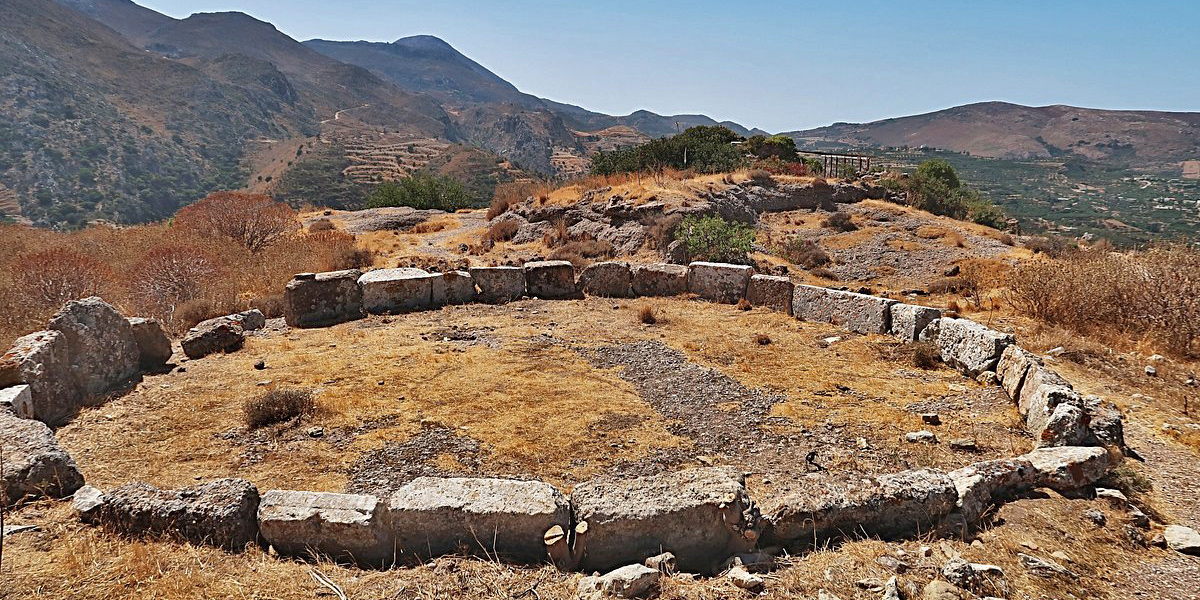The moment one sets foot at Polyrrinia, one instantly senses that it is a place with a history that can be traced back to the distant past. Historical traces from different periods can be seen everywhere, and architectural elements remain scattered throughout the site, either on their own, in the ruins of ancient buildings, or incorporated into constructions of subsequent periods.
The village is built amphitheatrically on the southern slope of a hill, on top of which an ancient T-shaped citadel existed, which had a magnificent view to the Cretan Sea and to the south of the area. Polyrrίnia was an excellently fortified city. During the Hellenistic period it was one of the most noteworthy cities of Crete.

The earliest information we have about Polyrrinia dates back to the late 4th century BC: an inscription which records a treaty between the neighbouring city of Falassarna and Lacedaemon.
Numerous inscriptions, most of them incorporated today into walls of churches and other buildings in the area, provide us with information on significant events from different periods.
Polyrrinia owes its name to the main occupation of its inhabitants, stockbreeding (in ancient Greek: ρήν(ε)α– rίnea = sheep).
Already in the Mycenaean period the city must have been flourishing; it is believed that king Agamemnon made a stop at Polyrrinia upon his return from Troy and offered a sacrifice to the gods.
A monolithic sacrificial altar existed at the temple of Artemis Diktynna, at the current location of Haloklissia. Zeus and Athena were also among the gods who were worshipped by the Polyrrineans; especially the goddess Athena, who was represented bearing a helmet and a spear.
At Peristerospilios (= cave of the pigeons), near an aqueduct, numerous hewn tombs can be seen. There is also a niche where a statue of the goddess-nymph, who was worshipped in the cave, was discovered.
Most of the ruins which survive today scattered over the hill, and the architectural fragments which are now incorporated in buildings of the current village, come mainly from the Roman and the Byzantine period, and secondly from the Hellenistic years.
Parts of the Cyclopean walls can still be seen today, indicating the efficiency of the fortification of the ancient city. Modifications were made to these walls in almost every historical period, even in the Venetian era. The remains of the Roman aqueduct, which was probably constructed by Emperor Hadrian, are the most magnificent ruins in the area. It consists of underground galleries (1,35 m wide and 2,30 m high) hewn into the rocky hill, which ended in marble fountains and supplied the city with water.
The Italian archaeologist Federico Halbherr conducted an excavation and revealed a section of a wall of the 4th century BC. Later, in 1936, during another excavation, the base of a building 50 metres long and 7 metres wide, with a colonnade, was unearthed. No other systematic excavation has been conducted ever since.
Many of the finds can be seen today in the Archaeological Museum of Chania.







